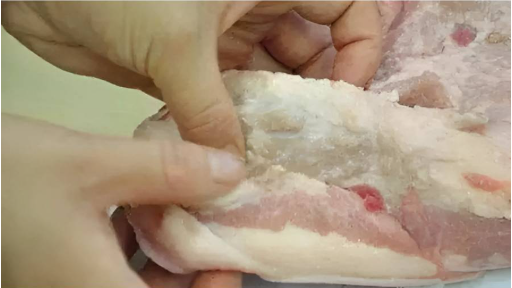Pork is a staple in many family meals, celebrated for its versatility and rich flavor. However, not all parts of the pig are created equal. Some areas of the pig harbor harmful bacteria, toxins, and pathogens that can negatively impact your health. While pork can be a delicious treat, it’s essential to know which parts to avoid or limit in your diet. Let’s explore three of the dirtiest parts of the pig that you should think twice about eating.
Why Certain Parts of the Pig Are Harmful

Pigs, like all animals, have organs and tissues that accumulate bacteria, toxins, and waste products. Some parts of the pig are more susceptible to contamination due to their function or exposure to external elements. Despite thorough cleaning and cooking, these areas may still pose a health risk. Here are the top three pig parts you should approach with caution.
1. Pork Neck: A Bacterial Hotspot
The neck of the pig is often overlooked when considering the risks associated with pork. While it may appear like a harmless cut of meat, it harbors numerous health concerns.
The Hidden Dangers of Pork Neck
- Lymph Nodes Galore: The neck contains numerous lymph nodes, which act as filters for bacteria, viruses, and toxins. These nodes often trap harmful substances, making the neck a breeding ground for contaminants.
- Blood Accumulation: During slaughter, a significant amount of blood flows out of the pig’s neck. This blood can carry pathogens and increase the risk of bacterial infection.
- Health Impact: Consuming pork neck regularly can expose you to potential infections and toxins that negatively impact your overall health.
If you enjoy this cut, ensure it is cleaned thoroughly and cooked at high temperatures to minimize risks.
2. Pig Intestines: A Breeding Ground for Pathogens
Pig intestines are a delicacy in many cultures, often used in dishes like sausages or stir-fries. However, their health risks make them one of the dirtiest parts of the pig.
Why Pig Intestines Are Hazardous
- Fecal Contamination: The intestines contain a significant amount of feces, which harbors microorganisms, harmful bacteria, and pathogens.
- Cleaning Challenges: Even with meticulous cleaning, traces of waste may remain, especially in the folds and crevices of the intestines.
- Cooking Limitations: While cooking at high temperatures can kill many bacteria, it may not completely eliminate all harmful substances.
Tips for Safer Consumption
If you can’t resist the unique texture and flavor of pig intestines, make sure to:
- Clean them thoroughly with salt or vinegar to remove visible waste.
- Boil them at high temperatures before adding them to your dish.
Despite these precautions, it’s best to limit your consumption of pig intestines to reduce the risk of health complications.
3. Pig Lungs: A Dirt Magnet

The lungs are another problematic part of the pig that should be avoided. Although some cuisines prize pig lungs for their distinct taste and texture, their exposure to harmful elements makes them a risky choice.
What Makes Pig Lungs Dirty?
- Respiratory Filtration: As the respiratory organs, lungs filter air and trap dirt, bacteria, and harmful particles. This is especially concerning for pigs, as they often breathe close to the ground.
- Exposure to Parasites: Pigs inhale dirt, feces, and parasites from the environment, which can accumulate in their lungs over time.
- Health Risks: Eating pig lungs can expose you to harmful bacteria, parasites, and even toxins that could lead to serious illnesses.
Proceed with Caution
If you’re determined to include pig lungs in your diet:
- Inspect them for visible contaminants.
- Cook them at extremely high temperatures to destroy harmful pathogens.
Still, the risks often outweigh the benefits, making it advisable to steer clear of pig lungs altogether.
The Importance of Safe Pork Consumption

While pork can be a flavorful addition to your meals, safety should always come first. Knowing which parts of the pig to avoid can help protect you and your family from potential health risks. It’s also essential to:
- Buy from Trusted Sources: Purchase pork from reputable suppliers who follow strict hygiene and safety protocols.
- Cook Thoroughly: Ensure all pork is cooked to an internal temperature of at least 145°F (63°C) to kill bacteria.
- Practice Proper Handling: Wash your hands, utensils, and surfaces thoroughly after handling raw pork.
Conclusion: Choose Your Pork Wisely
Not all parts of the pig are safe or healthy to consume regularly. The neck, intestines, and lungs are particularly risky due to their exposure to bacteria, pathogens, and toxins. By understanding the hidden dangers of these parts, you can make informed decisions about the pork you serve at your table. When in doubt, prioritize cuts of pork that are lean, clean, and free of harmful contaminants.
Eating pork can be a delightful experience, but it’s vital to prioritize your health. Next time you plan a meal, think twice about these questionable pig parts and consider safer alternatives. After all, when it comes to food, it’s better to be safe than sorry.


